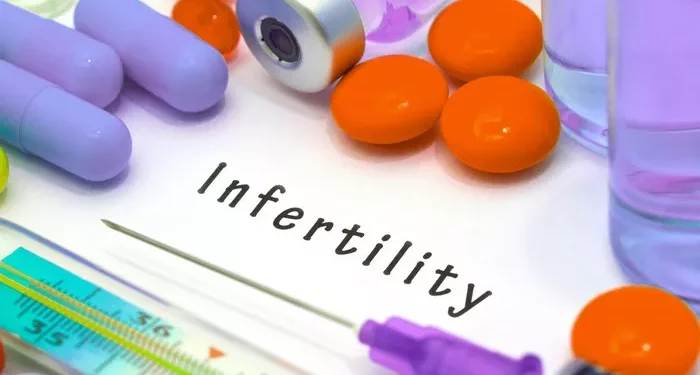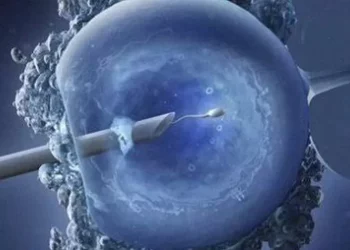Female infertility affects millions of women worldwide, with an estimated prevalence of 10-15%. Infertility is defined as the inability to conceive after one year of regular, unprotected intercourse. The causes of female infertility are diverse, ranging from ovulatory disorders, tubal damage, and endometriosis, to unexplained infertility where no specific cause can be identified. Addressing infertility often involves a combination of lifestyle modifications, medical treatments, and sometimes assisted reproductive technologies (ART).
I. Clomiphene Citrate
Clomiphene citrate is one of the most commonly prescribed medications for inducing ovulation in women with infertility. It has been used for over five decades and remains a first-line treatment due to its efficacy, ease of administration, and relatively low cost.
History and Development
Clomiphene citrate was developed in the 1960s and was approved by the FDA for clinical use in 1967. Initially, it was intended for treating anovulatory infertility, but its applications have expanded to include various other indications. The development of clomiphene marked a significant milestone in reproductive medicine, offering new hope to women struggling with infertility.
Mechanism of Action
Clomiphene citrate works by blocking estrogen receptors in the hypothalamus, which is the brain region responsible for regulating hormones. This blockade leads to an increase in the release of gonadotropin-releasing hormone (GnRH), which in turn stimulates the pituitary gland to release follicle-stimulating hormone (FSH) and luteinizing hormone (LH). The increased levels of FSH and LH promote the growth and maturation of ovarian follicles, thereby inducing ovulation.
II. Indications for Clomiphene Citrate
Common Indications
Clomiphene citrate is primarily used for inducing ovulation in women with certain types of infertility. The common indications include:
Anovulation
Anovulation, the absence of ovulation, is a leading cause of infertility. Women who do not ovulate regularly cannot conceive because there is no egg available for fertilization. Clomiphene citrate is effective in inducing ovulation in these women, particularly those with hypothalamic or pituitary dysfunction.
Polycystic Ovary Syndrome (PCOS)
PCOS is a hormonal disorder characterized by irregular menstrual cycles, anovulation, and polycystic ovaries. Clomiphene citrate is the first-line treatment for ovulation induction in women with PCOS. It helps regulate menstrual cycles and promotes ovulation, increasing the chances of conception.
Unexplained Infertility
In cases of unexplained infertility, where no specific cause can be identified after thorough evaluation, clomiphene citrate is often used empirically. It can stimulate ovulation and enhance the likelihood of pregnancy in these couples.
Criteria for Selecting Patients
The selection of patients for clomiphene citrate therapy involves a thorough evaluation of their medical history, physical examination, and diagnostic tests. Key criteria include:
1. Documented anovulation or irregular ovulation
2. Normal baseline hormonal levels (e.g., FSH, LH, thyroid function)
3. Absence of contraindications such as pregnancy or liver disease
4. Normal uterine anatomy and tubal patency
5. Male partner with normal semen analysis
III. Dosage and Administration
Standard Dosage Guidelines
The dosage of clomiphene citrate varies based on individual patient response. The standard guidelines include:
Initial Dose
The initial dose of clomiphene citrate is typically 50 mg per day, taken orally for five consecutive days. The treatment usually starts on the second, third, fourth, or fifth day of the menstrual cycle.
Dosage Adjustment Based on Response
If ovulation does not occur with the initial 50 mg dose, the dosage can be increased in subsequent cycles. The dose may be increased by 50 mg increments up to a maximum of 150 mg per day. It is essential to monitor the patient’s response to adjust the dosage appropriately.
Treatment Regimen
Cycle Day Administration: Clomiphene citrate is commonly administered starting on cycle day 3-7 or cycle day 5-9. Both regimens are effective, and the choice depends on the clinician’s preference and patient factors.
Monitoring Ovulation Response: Patients undergoing clomiphene citrate therapy should be monitored to assess their ovulatory response. Monitoring methods include basal body temperature charting, mid-cycle ultrasound to evaluate follicle development, and serum progesterone levels in the luteal phase to confirm ovulation.
Duration of Therapy
Maximum Number of Cycles: It is generally recommended not to exceed six cycles of clomiphene citrate therapy. Prolonged use beyond six cycles is associated with diminishing returns and potential risks.
When to Consider Alternative Treatments: If ovulation is not achieved after three cycles at the maximum dosage, or if pregnancy does not occur after six ovulatory cycles, alternative treatments should be considered. These may include the use of other ovulation induction agents or assisted reproductive technologies.
IV. Monitoring and Evaluation
Baseline Evaluations
Before initiating clomiphene citrate therapy, baseline evaluations are essential to ensure appropriate patient selection and to identify any underlying conditions that may affect treatment.
Hormonal Assessments
Baseline hormonal levels, including FSH, LH, estradiol, and thyroid function tests, should be measured to evaluate ovarian reserve and overall endocrine health.
Ultrasound Monitoring: A baseline pelvic ultrasound is performed to assess the ovarian and uterine anatomy, and to rule out any ovarian cysts or other abnormalities.
Mid-Cycle Monitoring
During the treatment cycle, mid-cycle monitoring is crucial to assess the response to clomiphene citrate.
Follicle Development: Transvaginal ultrasound is used to monitor the development of ovarian follicles. The size and number of follicles are measured to predict the timing of ovulation.
Endometrial Thickness: Endometrial thickness is evaluated during ultrasound monitoring. An adequate endometrial lining (typically >7 mm) is necessary for successful implantation.
Post-Treatment Evaluation
Confirming Ovulation: Ovulation can be confirmed by measuring serum progesterone levels approximately one week after the expected ovulation date. A progesterone level >3 ng/mL generally indicates ovulation.
Pregnancy Testing: If ovulation is confirmed and the patient has a missed period, a pregnancy test should be performed to determine if conception has occurred.
See also: UTIs and Female Infertility
V. Side Effects and Risks
Common Side Effects
Clomiphene citrate is generally well-tolerated, but some patients may experience side effects.
Hot Flashes: Hot flashes are the most common side effect, reported by up to 10% of women. They are usually mild and transient.
Mood Swings: Mood swings, irritability, and emotional lability can occur, likely due to the hormonal changes induced by clomiphene citrate.
Abdominal Discomfort: Some women may experience abdominal bloating, discomfort, or pelvic pain due to the enlarged ovaries.
Serious Risks
Ovarian Hyperstimulation Syndrome (OHSS): OHSS is a rare but potentially severe complication characterized by enlarged ovaries and fluid accumulation in the abdomen. It requires immediate medical attention.
Multiple Pregnancies: Clomiphene citrate increases the risk of multiple pregnancies (twins or more) by about 7-10%. Multiple pregnancies carry higher risks for both the mother and the babies.
Long-Term Risks: Long-term use of clomiphene citrate beyond the recommended number of cycles has been associated with an increased risk of ovarian cancer, although this risk remains low.
VI. Contraindications and Precautions
Absolute Contraindications
Clomiphene citrate should not be used in the following conditions:
Pregnancy: Clomiphene is contraindicated in pregnancy due to potential adverse effects on the developing fetus.
Liver Disease: Patients with active liver disease or a history of hepatic dysfunction should not use clomiphene citrate.
Hormone-Dependent Tumors: Women with hormone-dependent tumors, such as certain types of breast cancer, should avoid clomiphene citrate.
Relative Contraindications
Fibroids: Patients with uterine fibroids should be evaluated carefully, as clomiphene citrate may cause fibroid growth.
Abnormal Uterine Bleeding: Unexplained abnormal uterine bleeding should be investigated before starting clomiphene citrate to rule out malignancy or other underlying conditions.
VII. Patient Counseling and Support
Patients should be thoroughly educated about the correct use of clomiphene citrate, including the timing of medication, potential side effects, and the importance of follow-up appointments.
Infertility treatment can be stressful. Providing psychological support and counseling can help patients manage anxiety and emotional distress associated with the treatment process.
Encouraging a healthy lifestyle can improve the chances of conception. Recommendations include maintaining a healthy weight, avoiding tobacco and excessive alcohol, and managing stress.
VIII. Alternative Treatments
Other Ovulation Induction Agents
Letrozole: Letrozole, an aromatase inhibitor, is an alternative to clomiphene citrate for ovulation induction, particularly in women with PCOS. It has shown similar or even superior efficacy compared to clomiphene in some studies.
Gonadotropins: Injectable gonadotropins are used for ovulation induction in women who do not respond to clomiphene citrate. These hormones directly stimulate the ovaries to produce multiple follicles.
See also: Uterine Fibroids and Fertility
Assisted Reproductive Technologies (ART)
Intrauterine Insemination (IUI): IUI involves placing washed sperm directly into the uterus around the time of ovulation. It can be used in conjunction with clomiphene citrate to enhance the chances of pregnancy.
In Vitro Fertilization (IVF): IVF is a more advanced ART method where eggs are retrieved from the ovaries, fertilized with sperm in the lab, and the resulting embryos are transferred into the uterus. IVF is considered for women who do not respond to other treatments or have more complex infertility issues.
IX. Conclusion
Clomiphene citrate remains a cornerstone in the treatment of female infertility due to its effectiveness in inducing ovulation. Proper patient selection, dosage adjustment, and careful monitoring are crucial for maximizing the benefits and minimizing risks.
Open communication between patients and healthcare providers is essential for successful treatment outcomes. Patients should feel comfortable discussing their concerns and experiences throughout the treatment process.
Ongoing research continues to explore new treatments and optimize existing therapies for infertility. Advances in reproductive medicine hold promise for improving the success rates and safety of fertility treatments, offering hope to couples struggling with infertility.
Related Topics:
Can Abortion Affect Fertility: Everything You Need To Know



























